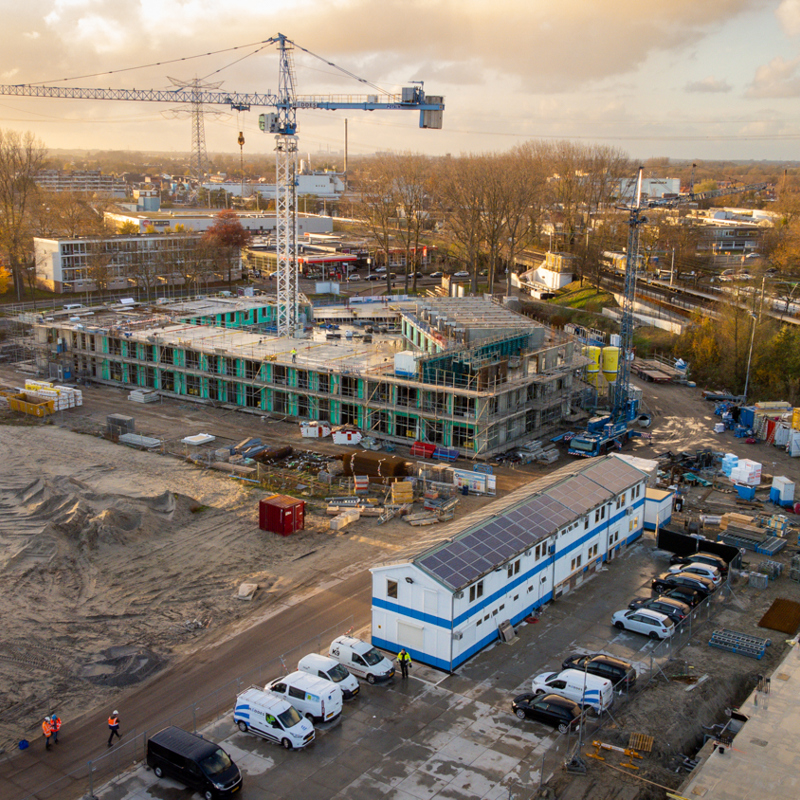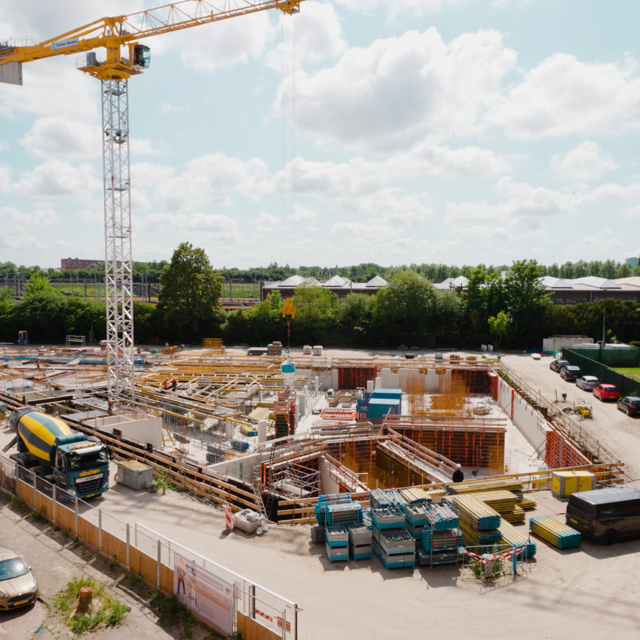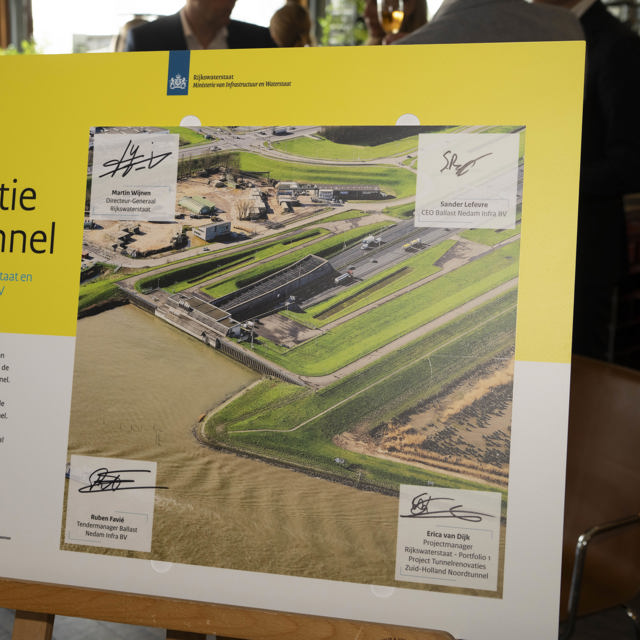On the road to a zero-emission construction site
By 2030, Ballast Nedam construction sites are CO2-neutral. 'First of all, you need commitment in the team and a few driving forces. Otherwise nothing will happen,' says Gerard Slagter, senior planning engineer at Heddes Bouw & Ontwikkeling, part of Ballast Nedam. Gerard is one of those driving forces. He is one of the reasons the site units at the Oostzijderpark project in Zaandam are covered with second-hand solar panels.
Second-hand panels
Gerard explains that most construction sites do not have electricity at first and so generators are used. ‘These burn a lot of diesel and cause quite a bit of pollution. That’s why we installed a large battery pack on the building site in Zaandam for the power supply. We’ve also installed 102 solar panels on the roof of the site units. This enables us to generate 20,000 kilowatts of electricity per year and to supply all site units and part of the building site with electricity. And the best part is: these are second-hand panels from Marktplaats. They come from an old school and would otherwise have been thrown away. So actually these solar panels are sustainable in two ways.’
‘In addition, we try to produce as little construction waste as possible and only use machines that meet the latest standards. We’re also using circular concrete for the first time. With all the knowledge and experience we’re gaining, we can inspire and help others to make their building sites more sustainable too,’ Gerard explains. ‘Our construction sites are not yet completely emission-free, but we’re on the right track.’


Green ambitions
‘The Heddes project in Zaandam dovetails perfectly with Ballast Nedam's green ambitions,’ says Jeffrey Hoffmann, Managing Director Ballast Nedam Materieel. ‘It ticks all the boxes: battery containers, solar panels and electric machinery. We’re working on sustainability in all kinds of ways, looking at different forms of sustainable energy, such as hydrogen, wind energy, biogas and solar energy. Only solar panels is not enough.’
Jeffrey explains that in early 2021 Ballast Nedam joined the Emission-Free Infrastructure Network (ENI), a network dedicated to emission-free construction sites in the infrastructure sector. ‘This network includes construction companies, commercial equipment services, manufacturers, importers and suppliers. Together we can further accelerate the transition from fossil to renewable energy in infrastructure.’
‘A good example of what ENI delivers is the development of an electric shovel by Volvo. The design costs of such a shovel are too high a burden for a single company. But if you all buy 30 electric shovels together, it's a different story. Then you can share the design costs,’ Jeffrey explains.
‘Especially in the infrastructure sector, with all those big machines, cooperation is essential in order to reduce emissions,’ adds Bramske van Beijma, Director Corporate Social Responsibility at Ballast Nedam. ‘Partly thanks to the Climate Agreement, sustainability is becoming increasingly important in tenders, especially in the public sector. This is forcing the entire construction world to join the transition from fossil to sustainable. As a contractor, we’re aware of the enormous impact our building process has on the environment. We deliver impressive buildings, and of course this generates carbon and nitrogen emissions. We want to reduce these emissions, both for the environment and for our employees.’
At the source
'We find it important to tackle emissions at the source instead of just compensating. That’s why we’ve mapped out which activities generate the most emissions on our construction sites. About half of our carbon emissions come from our machines’ diesel consumption, so there’s still a lot of room for improvement there. For example, by electrifying large construction equipment such as excavation and foundation machines.’
Bramske explains that the zero-emission construction site is just one part of Ballast Nedam's entire sustainability policy. ‘We’re also working on making our offices, production sites and vehicle fleet more sustainable, for example. At first, we were mainly concerned with raising awareness, but we’ve now reached the point where we’re actually taking action. We want to have the first fully emission-free construction site in 2023 and be carbon-neutral by 2030. A tough challenge, but one we're happy to take on.’






